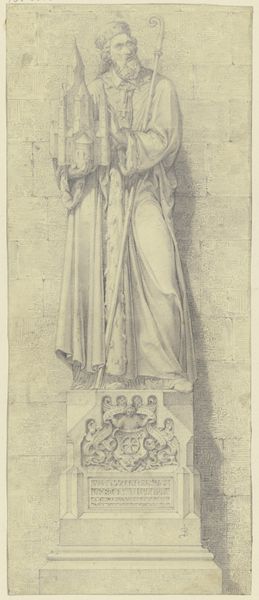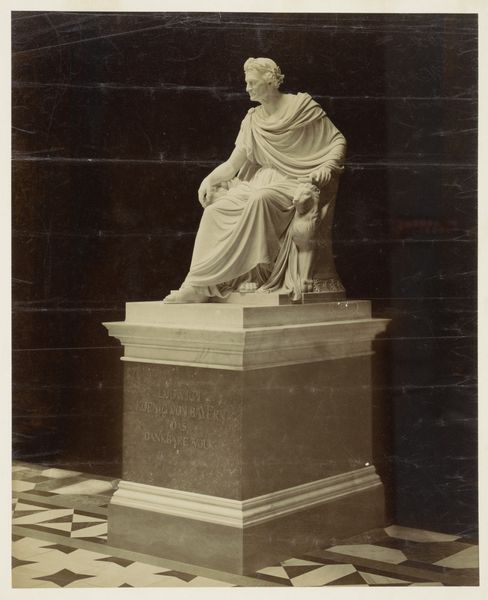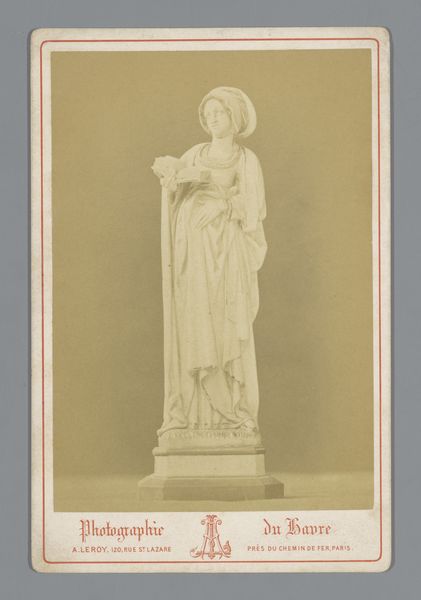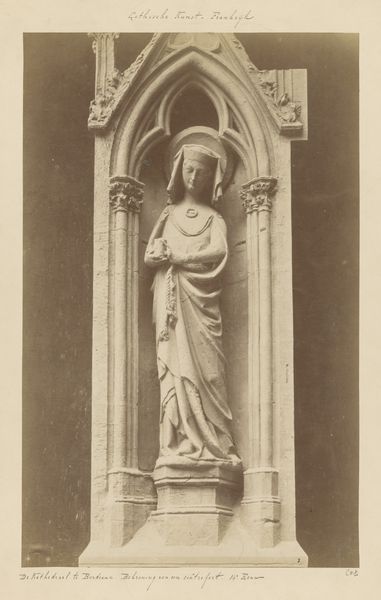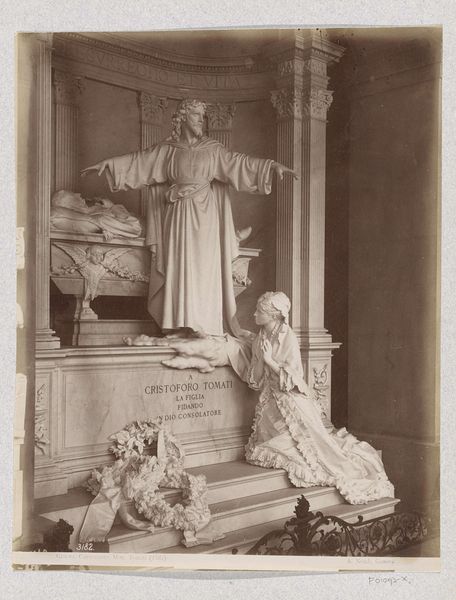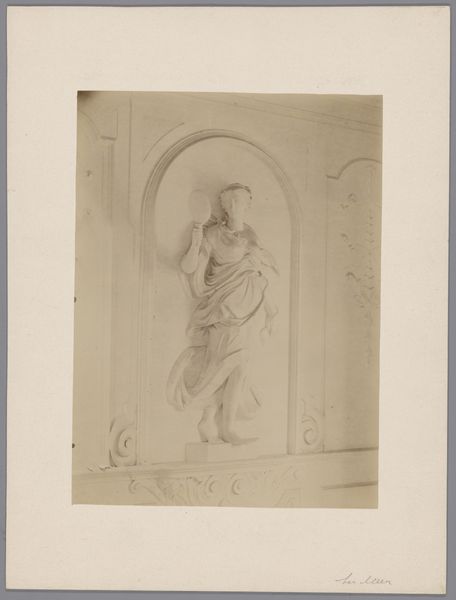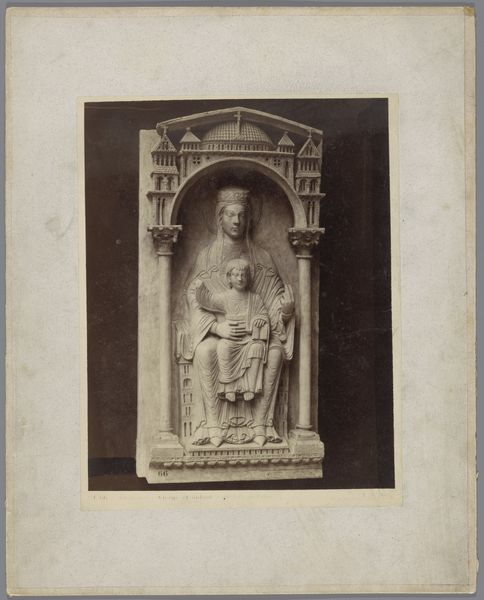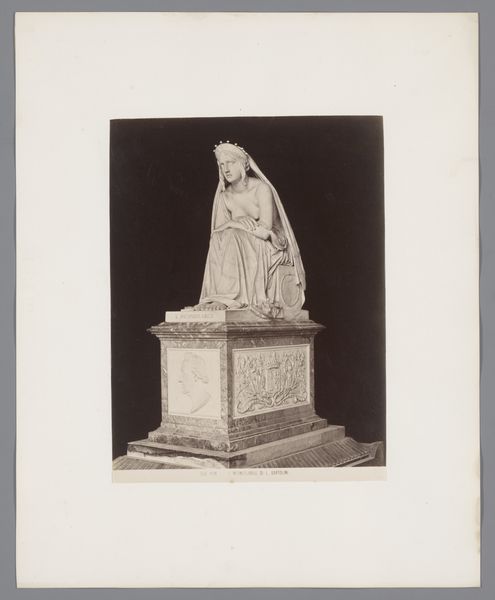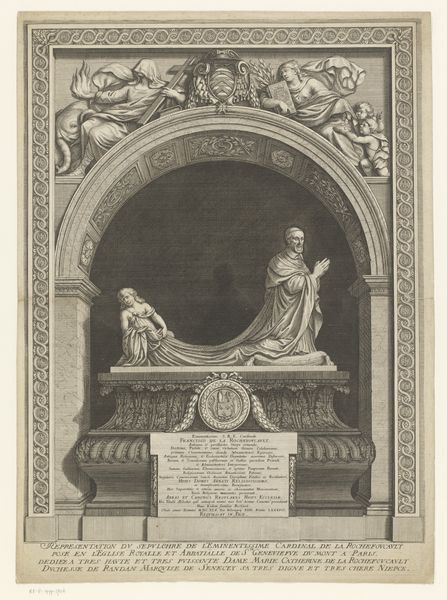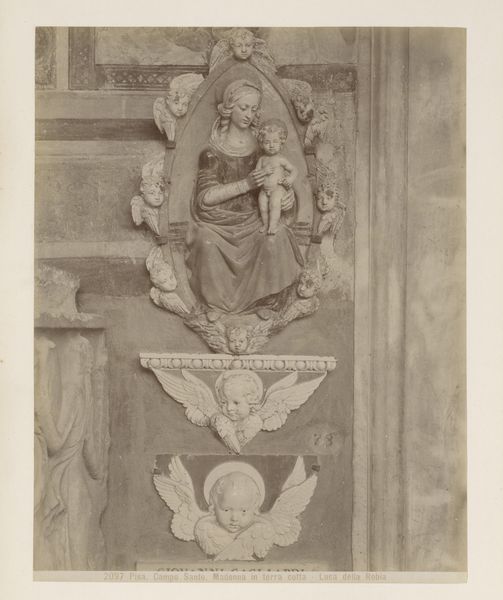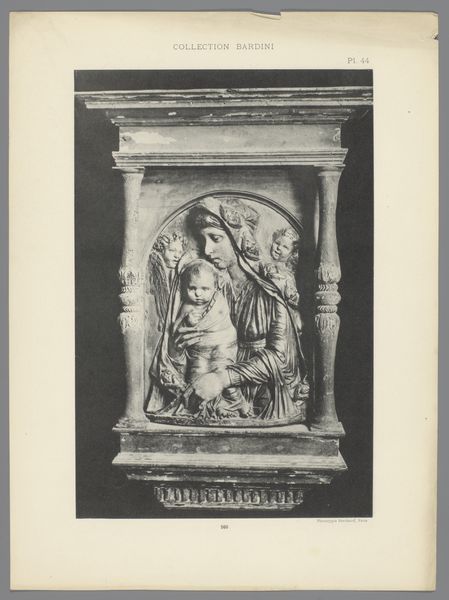
Standbeeld van Nicola Pisano naar Salvini in het Camposanto te Pisa, Italië 1860 - 1881
0:00
0:00
photography, sculpture, gelatin-silver-print
#
portrait
#
photography
#
portrait reference
#
sculpture
#
gelatin-silver-print
#
academic-art
Dimensions: height 257 mm, width 200 mm
Copyright: Rijks Museum: Open Domain
Curator: This is a gelatin silver print by Giacomo Brogi, dating from around 1860 to 1881. The image depicts a sculpture of Nicola Pisano in the Camposanto in Pisa, Italy. Editor: The sepia tones give it a certain gravitas, don't they? It evokes a real sense of age, of historical weight. Curator: Precisely. Notice how Brogi has positioned the camera. The sculpture dominates the composition. Its form, its inherent qualities, take center stage. We're invited to analyze the play of light and shadow across its surface, appreciate its formal arrangement within the frame. Editor: But the context is vital! The Camposanto itself, the other sculptural elements in the background… they're not just there for pictorial effect. They point to a complex network of artistic labor. Consider the stonecutters, the workshops that would have produced this sculpture, and others around it. Curator: Granted, yet the composition isolates the statue. The subject itself is further emphasized by the angle, which adds volume and weight. Semiotically speaking, the image communicates an assertion about cultural legacy and permanence. Editor: I am drawn to how photography allowed wider distribution and access. The labor invested not just in its creation, but also in its subsequent presentation— the print medium allowing a simulacrum to be owned and displayed at distance. I also can’t help thinking of this image’s status as an art reproduction. Who gets to record history, and who then consumes those depictions, becomes incredibly charged. Curator: You bring up compelling socioeconomic points. For me, however, I'm most interested in its representation of idealized form within defined aesthetic systems and modes. The sculpture becomes not just a physical object but a symbol to contemplate and emulate. Editor: Absolutely! And understanding both is essential. Knowing who made this photograph, for whom, where, how it was circulated: that brings texture and reality to those symbolic systems you observe. We might both be enriched. Curator: Indeed. I appreciate having taken this moment to consider this object from different but ultimately not oppositional views. Editor: To appreciate both the art, and the processes which allowed it to endure to be available to us now, to talk about.
Comments
No comments
Be the first to comment and join the conversation on the ultimate creative platform.
